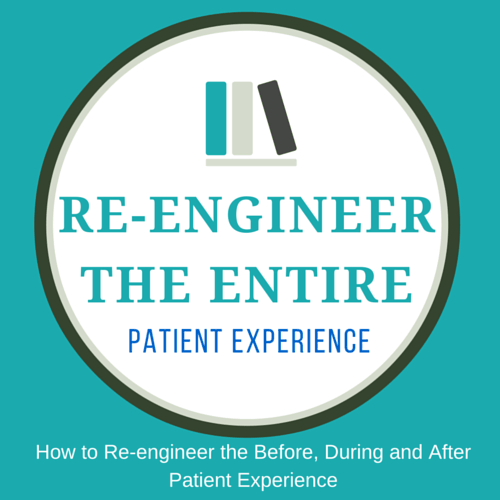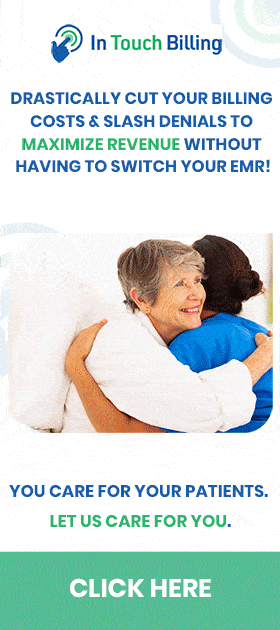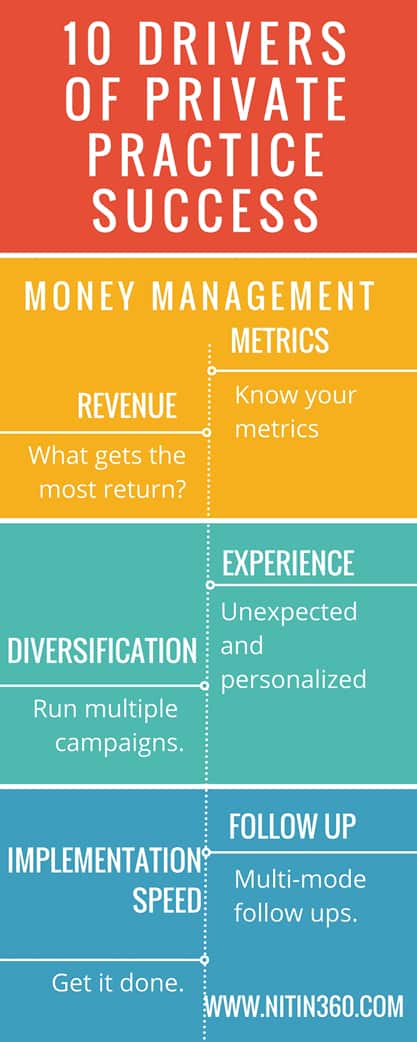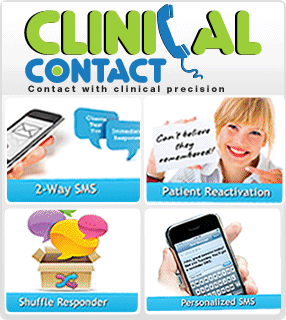
“It is not the strongest or the most intelligent who will survive, but those who can best manage change.”
– Charles Darwin
Small changes to your patient experience, as opposed to sweeping, ground breaking transformations can yield a significant benefit for your practice over time.
The Before-During-After Patient Continuum
 The entire patient experience consists of THREE major components:
The entire patient experience consists of THREE major components:
- Before
- During
- After
Collectively, these three components form the Before-During-After (BDA) patient continuum.
In this article, you will discover several strategies to improve the before, during and after patient experience.
In fact, the right patient experience begins even before the patient has stepped into your practice, and it continues well beyond discharge.
The ‘Before’ patient experience consists of the patient experience before they set foot in your practice for the first time. It includes:
- The initial ‘inquiry’ phone call
- The scheduling process
- The eligibility / insurance benefits verification process
- The waiting room experience
- The patient intake experience
- All front desk / call center phone conversations
- Any experience the patient has before they see the clinician for the first time.
The ‘During’ patient experience consists of the patient experience when they are in the practice. It includes:
- The front desk experience (greeting, co-pay collection)
- The wait time / general experience immediately prior to the visit
- The experience with the clinician and staff members (discussions and interactions)
- The experience of therapy / treatment (typically the strongest part of the chain)
- The immediate benefit / improvement experienced while in the clinic
The ‘After’ patient experience consists of the patient experience between treatments and after discharge. It includes:
- The follow-up from the staff to ask about the ‘during’ experience
- Home exercise programs and other remedies for added / on-going benefit
- Appointment reminder experiences
- Billing inquiries / statements
- Marketing / promotional interactions (newsletters, patient appreciation day invitations, etc.)
Let’s take a closer look at each component, and how to improve it further.
Transforming the ‘Before’ patient experience:
This is a very crucial part of the process because it establishes the patient’s first impression of your clinic. In my experience as a consultant, this is the weakest link in the chain for most practices.
Consider the following questions: How did the patient find you or hear about you? Did they visit a professional, mobile-friendly website optimized for search engines? Did they find out about you through professional, high quality brochures? Did they visit your website and enter their information in exchange for an educational resource? If you need help with any of these, check out the Referral Ignition done-for-you marketing program for your practice.
Has the patient been receiving a content-rich, useful therapy newsletter educating them about the benefits of physical therapy? If this is done correctly, the patient is conditioned to see you as an expert even before they step in to your clinic.
A newsletter should have built-in ’refer a friend’ technology for patients and ’one click’ unlimited faxing to doctors. The ability to distribute pre-written content to your community, patients, doctors and local businesses through email, print and fax is an excellent way to establish expert status. You should print and distribute high quality color or black and white newsletters to enhance your reputation as an expert.
Your practice should have several, done-for-you “patient stimulator” eBooks (which you can customize and re-use in any way you like including print and online distribution) on several topics ranging from low back pain to shoulder pain and weight loss.
So when a patient comes to your website and enters their name and email address in a form on your site, the data is automatically stored and they start getting your newsletters twice a month (every patient should have the option to unsubscribe from your newsletter at any time).
Patients should receive customized email sequences (new patients get a welcome sequence, discharged patients get a ‘thank you’ sequence, patients who miss appointments get reminder sequences and so on). You can also build trust and recognition with your patients by sending them automated birthday greetings! To learn about a time-saving technology that includes pre-written content and does all this for you while giving you complete control over your message, click here to learn about the Therapy Newsletter.
A great way to collect a patient’s email address even before they step into your clinic is to use this suggested script:
“We have great news for you. We are giving away FREE eBooks on …. (choose from a variety of eBooks provided for you as a member and made readily available to your patients) … these books are delivered digitally since we want to save costs on printing and shipping. Type in your email so we know where to send the books.”
The bottom line – A ‘comfort level’ (or lack thereof) is established within seconds of the initial call. During the first phone call, make sure that your front desk staff is supportive, helpful, and empathetic to the patient’s condition.
If the patient says,“I have low back pain,” the last thing to say is, “What’s your insurance?”
‘Mock calls’ to your front desk and a random audit of your front desk staff can help identify areas of improvement.
Scheduling appointments should be a simple and effortless experience for all patients. Ask yourself:
Can patients schedule their appointments online at their own convenience? With the growing number of devices patients can use to access the internet, more and more patients are looking for simple, convenient ways to schedule appointments without having to talk to anyone on the phone.
If patients are routed to representatives in a call center for scheduling purposes / after business hours, the first impression begins with that phone call. Every single person speaking on your behalf molds the patient’s perception of your practice.
The eligibility / insurance verification process is confusing and intimidating for most patients. Make it easy for them by doing the hard work and tell them what their co-pay is, and if they are likely to see a bill from you. A simple explanation can put the patient’s mind at ease and significantly improve acceptance of treatment, as well as timely patient payments. An educated patient is a happy patient. Consider the use of software like In Touch Biller Pro, which automates eligibility verification by retrieving information from the payer database and utilizing it to pre-populate patient demographic information. This can save time and reduce claim denials.
The ambiance of the waiting room creates a lasting impression. Is the waiting room neat and tidy? Is music playing in the background? Is it a comforting place? What about smells and fragrances in the air?
Are the staff members relaxed, attentive and helpful? Are they checking their phones, messaging friends on Facebook or chatting amongst themselves?
The patient intake, in general, takes up a lot of time for patients and front desk staff. The objective is to gather specific details from the patient and verify the accuracy of the information. It is crucial that all details match with the patient record that exists in the database of the insurance company. Small, inadvertent mistakes can cause claim denials. These include, but are not limited to, errors in the date of birth, misspelled name, address, etc.
Transforming the ‘During’ patient experience:
 When the patient arrives at your clinic and receives care, they are in the middle of the ‘During’ patient experience.
When the patient arrives at your clinic and receives care, they are in the middle of the ‘During’ patient experience.
Is the patient greeted by the front desk and welcomed? Is the patient’s first visit a ‘celebration’ and does it validate the patient’s decision to show up?
Think of your front desk as the barista at a coffee shop – welcoming customers to a unique and memorable experience. The front desk has to go out of their way to create a personalized and unexpected experience that goes above and beyond.
Here is an example:
“Hello, please be seated and we will let you know when the therapist is ready.” This greeting is not personalized, and it’s exactly what most patients expect.
“Hi, Joanna! It is so great to see you! Was parking okay? While you wait, can I get you a cup of coffee or a magazine? Coffee? Sure! How do you like it?” This greeting, on the other hand, is personalized and completely unexpected.
Most patients expect to be seen at their scheduled time, or wait a few minutes. Long wait times can cause frustration and anxiety.
While the patient is waiting, do the staff members make eye contact with the patient at least once, and offer to assist in every way they can? Staff members are extremely busy helping other patients, taking phone calls, and managing the office, but it takes less than a minute to show the patient that help is available at any time.
The manner in which a patient complaint is handled is very important. An honest and prompt interaction with the patient gets the patient to know, like, and trust you. It demonstrates an acknowledgment of the problem and a reasonable effort to correct the problem while thanking the patient for the feedback.
Here is an example of a suggested scripting:
“We understand that you are unhappy about __________. I am so sorry to hear this. To make sure corrective action is taken as quickly as possible, please tell us what we can do better for you next time. We value your feedback and are committed to improving your entire experience with us”.
The interaction with the clinician and the experience of therapy is both at the core of the ‘during’ patient experience. This includes the evaluation, treatment, and home exercise program. It also includes the immediate benefit (pain relief, increase in range of motion, etc.) experienced by the patient in the clinic. They leave the clinic feeling much better.
Understandably, this is the strongest part of the BDA continuum because it is the area that clinicians focus on the most. It is the area in which clinicians receive most of their training, and it is the delivery and the monitoring of patient care.
Quick, compliant clinical documentation and streamlined billing is important for clinical productivity. The ability to transmit the claim (ICD codes, CPT codes and modifiers if appropriate) to the billing software with one click is the foundation of streamlined billing processes. When a claim is sent to the insurance company quickly, the practice gets paid faster.
Your EMR system should allow you to ‘auto generate a patient’ and create a patient record without having to enter the patient’s demographic information by capturing data from the payer database and uses it to auto generate a patient record.
Every clinician in your practice should be able to create an unlimited number of documentation templates, all of which are customizable. Voice recognition, iPad and auto text features (type in an abbreviation like ‘hep’ and the text “Patient is compliant with home exercise program” automatically appears in the comment box”) allow fast, efficient note taking.
The clinical workflow should be integrated with the front desk workflow. For example, when you ‘check in’ a patient, the system should automatically count it as an authorized visit, allowing your front desk to keep track of the remaining authorized visits.
When a note is finalized, the claim should automatically appear inside the integrated billing software. The billing software and clearing house should be merged, so you have one system for claim submission, ERA posting, denial management, patient statements and reports. Your biller should be able to automatically scrub a claim and determine if there are any problems before it is submitted. The system should automatically batch claims and submit them at the end of each day. ERAs can be reviewed and posted to the patient’s account in one click. Secondary (and tertiary) billing should be done with one click. Patient statements should be generated with one click.
Transforming the ‘After’ patient experience:
The moment the patient leaves your clinic (until the next visit) or is discharged from your clinic, they are in the ‘After’ patient experience.
This is typically the weakest part of the chain in the entire continuum. Here are some ways to improve the ‘After’ patient experience
If the patient is tired / in pain / needs help, someone in the office should offer to walk the patient to their car. Go the extra mile. In fact, offer to carry the patient’s bags / anything else they might have difficulty carrying over to the patient’s car. Take this one step further.
A staff member gets the car keys from the patient’s and drives the patient’s car over to the entrance / exit. Yes, I am literally talking about a valet service for your patients. Test it out with some of your senior patients and you might be surprised with the immediate impact in patient experience.
Every patient should get a phone call once a week after discharge for 6-8 weeks. Again, this is a personalized and completely unexpected gesture. The suggested script on this ‘follow up phone call’ is:
“Hi, Joanna! I am just calling to check in to see how you are doing, and to remind you to do your home exercise programs. You came to our clinic for ___________ and I wanted to see if you were feeling better. If there is anything we can do to help, please let me know. By the way, we are never too busy for your referrals. Please call me at ________ if there is anything we can do for you or ask your friends and family to visit our website at ________”.
Every patient should get a phone call once a month after discharge for 3-4 months with a ‘referral reminder script.’ The suggested script on this ‘referral reminder phone call’ is:
“Hi, Joanna! Just calling to let you know that we depend on word of mouth referrals from valued patients like you. We don’t spend money on advertising like other practices do, and the best way you can thank us is by referring a friend or family member. We are never too busy for your referrals. So, if you believe you know someone who might benefit from our services, please help us spread the word.”
A ‘referral reminder script’ by email with a ‘call to action’ is also very beneficial. A sample script is:
“Here is what you should do next. Simply respond to this email with the name and contact information of someone you know who might benefit from our services, and we’ll take care of the rest. We’ll reach out to them and offer a no-obligations consultation to help them improve their health and wellness. It’s a win-win situation since your friends and family will thank you for referring you to this valuable service.”
Use a twice-a-month newsletter that reaches patients by email and regular mail. Provide content that reinforces your authority as an expert, tells patients a little bit about you and your staff, and provides useful, practical information on an on-going basis.
Other marketing / promotional interactions and special offers. Invite your patients to come back to your clinic with free trials of cash paying services, conduct regular ‘patient appreciation days,’ and identify valid reasons to add value to patients. You will draw them back to your clinic in the process.
Send appointment reminders by email, automated phone calls, and text messages. Use technology to create ‘auto campaigns’ based on ‘automatic behavior pathways’. Here’s how an automatic behavior pathway works.
The patient is sent an email with specific content (low back pain, for example).
- If the patient does not open the email, the patient is sent a reminder email.
- If the patient clicks on the email, they are send another, more targeted email.
- This process continues until you stop it, or until a patient takes a desired action.
- Now imagine if the word email was replaced with text message or even voice broadcast.
Simple steps can revolutionize your marketing when you use technology for text, voice and email marketing. You should be able to take advantage of the following: SMS, MMS, voice broadcasting, email marketing and social marketing including Facebook, Twitter, to reach patients in your community.
These powerful tools of media communications has emerged as a new way of contacting patients with unmatched speed and precision. This is a simple way to: reactivate former patients, welcome new patients, introduce special promotions and marketing campaigns tests, send warm invitations or reminders to special events in your clinic, create new product or service announcements, send travel directions, and much more…
Technology like Clinical Contact makes it easy to build, launch, manage, and analyze mobile campaigns in real-time. Here are some compelling reasons to use mobile marketing physical therapy in your private practice.
- Mobile marketing enables you to send text messages to ANY cell phone
- Text message personalization – looks like it was personally sent
- Over 95% of SMS messages are opened as compared to 10-20% open rate for email
- Short text messages are direct, to the point and get the patient’s full attention
- Mobile marketing generates significantly higher return on investment as compared to direct mail or email
- Mobile marketing enables creative, interactive, and engaging campaigns
Another aspect of the ‘after’ patient experience is the management of the patient’s outstanding balances. Handling patient inquiries about billing, and sending patients simple, concise statements helps patients to understand, instead of resent, their financial obligations.
The BDA continuum can be streamlined and improved with the right people, using the right systems, and implementing the right software.
For many practices, there are several weak links in the chain that can be improved quickly, and with very little effort. Compared to the ease with which these gaps can be plugged, the overall impact on the BDA continuum (and the increase in patient satisfaction rates) is exponential.
Small things can indeed go a long way.
Make a commitment to make small changes to your practice every week and transform your BDA continuum in the rest of 2017 and beyond!
DID YOU LIKE THIS BLOG POST?
If you did, I have a lot more in store for you. Click here to get my success blueprint for private practice. It’s a complete step by step formula to help you grow your practice.






